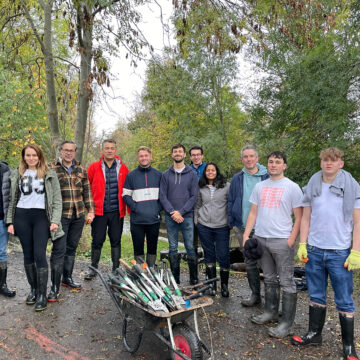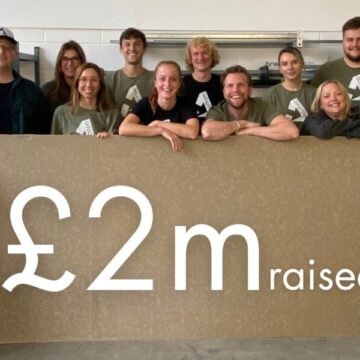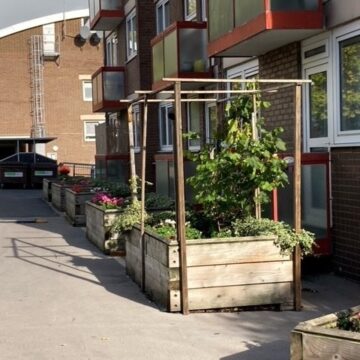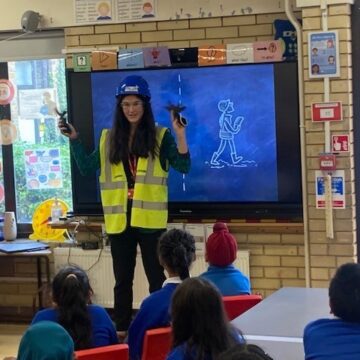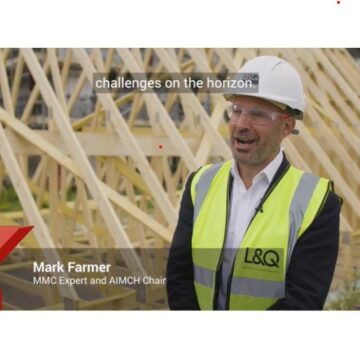2017 is likely to be one of the most volatile years for the construction industry for some time. There are an unprecedented set of issues playing out at the moment that are likely to create different stresses and strains.
For developers and investors who will be commissioning construction projects this year, it is critical that they engage with the construction sector carefully and obtain the best market insight and intelligence to help navigate the elevated risks and new opportunities that I believe will present themselves in the market as we go into 2017.
In terms of overall construction price movement and associated levels of output, it is extremely difficult to assess whether this year will be net inflationary, static or deflationary. That is not meant as a glib ‘duck the issue’ statement, but is recognition that anyone in the forecasting business this year is likely to be relying on more luck than judgement. The days of cost researchers stating year on year construction price inflation indices to two decimal places are over (if they were indeed ever credible!)
With regards to market activity and related anecdotal evidence, there is still a ‘busy’ feeling amongst trades engaged towards the ends of projects, such as M&E and fitting out. However, this is now tempered, I believe, by increasing nervousness from main contractors and early trades of a diminishing forward order book as pre Brexit commissioned commercial and some residential projects finish and are not replaced by new work. I, therefore, see margin compression highly likely this year. The real price compression will come not in the first tier Main Contractor market, where entry margins are thin, but in the second tier sub-contracting supply chain, where specialists have been able to expand margins in the last few years on a supply and demand basis. Whether recent levels of true ‘margins’ (as opposed to ‘cover’ prices or prices borne from more sinister anti-competitive behaviour that has plagued our industry) are sustainable in a lower demand environment will become clear in 2017, but I would suspect not. That does not help the supply chain who have been using recent better profits to plug the holes created in their financial reserves by the preceding downturn and even buffer for the future. Hopefully, for everyone’s sake, we can get to a more ‘normalised’ position this year where there is a stronger relationship between construction input costs and selling prices to clients.
In terms of input costs, provided we don’t have significant post-Brexit EU labour leakage, especially in London, I see some pressure coming off labour rates, especially in early works trades, where there may be a short term ‘mirage’ of skills pressures easing (do not be fooled by this in the context of the longer-term industry needs). However, major infrastructure projects such as Hinkley Power Station or early HS2 packages will still create ‘hot spots’ of labour/contractor unavailability. Sterling weakness will also mean overseas sourced materials or component prices are a source of inflationary pressure and projects that are import heavy will have a higher cost profile now compared than more domestically sourced ones.
Any possible general short term relief from the recent rampant build cost inflation experienced is however likely to mask ongoing issues with delivery certainty as the industry continues to struggle to achieve cost, time and quality targets due to capacity and capability constraints. I think this will result in a likely increase in contract disputes this year, especially on projects where Contractors are holding fixed price currency risk that has not been backed into their supply chain or where developers cannot afford to settle claims as they have not sold or leased buildings. In addition, many contractors have continued to announce financial losses so any market downturn creates a resurgent insolvency risk.
A weakening market usually also means a willingness to accept more risk by some Contractors as we saw in 2009 / 2010. There will be some Contractors however who are reticent, quite rightly, to join another ‘race to the bottom’. However such noble stances will potentially mean shrinking businesses for some unless something different is offered to clients from both contractors and indeed consultants that is much more results and outcome led.
Collaboration will continue to be the largely out of reach ‘Holy Grail’ for our industry in 2017. Poor commercial behaviours are still rife in the supply chain and this will make any attempt at truly collaborative inter-disciplinary, inter-company working with a fragmented Design / Main Contractor / Sub Contractor model often an unattractive proposition to clients sceptical of achieving value for money.
Many commentators will immediately cite the technical benefits of BIM as a collaborative tool and this is the panacea for our fragmented industry. However, it is the contractual structures and behavioural inertia in large parts of our industry that means we will be putting a ‘square peg in a round hole’ if you don’t address these fundamentals first.
I have seen this first hand in the private developer market where ‘BIM’ is, in reality, various partial Revit models flying around on a project and then being badged as ‘BIM’ whilst it has no discernible impact on procurement, cost & risk management, payment practices and ultimately dispute. The same applies to ‘collaborative contracts’ which are often abused due to deep-seated opportunistic commercial practices. Boardroom-level cultural and behavioural alignment is all too often just lip service and is often not translated to project/site and wider supply chain level anyway.
This is where making very clear corporate and personal decisions on who we are all working with in 2017, at all levels, will I suggest, be one of the single biggest contributions we can make to the industry modernisation agenda. It will be increasingly important as part of any attempt to create more successful integrated and trusted working practices centred around a common goal and is not just about going on a ‘collaboration course’!
Unsurprisingly, many of these 2017 challenges reflect the structural issues for the construction sector that I set out in my recent report, Modernise or Die. I know this will drive an increasing number of clients, especially in the residential sector, and many of whom I have already spoken with, to seek different delivery models that my report suggests are the industry’s real untapped opportunity. That process has already started in late 2016 with various announcements regarding new players entering the market using innovative delivery models at a scale not seen before. I expect that trend to continue into 2017 supported by government housing and industry strategy policies and increasing international interest in the UK pre-manufactured construction opportunity.
What I believe is finally coming over the hill therefore in 2017 in parts of the residential construction sector is a much needed move to industrialised DfMA with more vertically integrated, digitally enabled, design & construction solutions using pre-manufacturing techniques. All of this will have collaborative working at the heart of it. The innovators and early adopters in this space will need to gain quick traction with the registered provider, local authority, private developer and investor markets if this is to be successful at scale for the first time in the UK. It is also imperative that they are successful in delivering the tangible outcomes they promise or we will see a complete false dawn for pre-manufacturing in the UK. Some of these ventures will take some time to operationalise and build scale but we should be patient if we really want to find a credible platform once and for all for transformational change in our industry.
We need to move the conversation on this year from modernisation being a virtuous choice to being a necessity with self-preservation at the heart of it, human nature then prevails. That will only start when better quality, high predictability pre-manufactured construction solutions start being delivered at scale without undue cost premium in the UK. In the meantime, those clients who have long term interests in using the construction industry should now also be accelerating the change agenda by demanding modernisation changes from those offering ‘business as usual’ or they should go further and start choosing wholly alternative delivery routes that disrupt the status quo whilst still fitting their own risk parameters. Tough love is what is needed for the industry I’m afraid. I am firmly of the view that the impetus for change and the overarching narrative to clients and the industry has to be much more of a manpower crisis reality check and a new disruptor threat assessment for all concerned if we are to start the road to recovery.
For me, 2016 was the beginning of the fork in the road for the industry that will determine whether or not we will be ultimately overwhelmed by the creep of industry shrinkage and decline. Setting more unrealisable industry performance improvement targets as part of government strategies or using direct government procurement practices and mandates as an example for the private sector to follow will not work if you want to change the industry at scale I’m afraid. That has been proven by the various reports and strategies published over the last 20 plus years – we are no further forward. As someone that was working at EC Harris nearly 20 years ago when we were submitting BAA and McDonalds Restaurants demonstration projects to the Movement for Innovation it pains me to say it but I know from first-hand experience that exemplar reference points do not travel or influence well in the property development industry!
The ‘Die’ in Modernise or Die is not about describing an industry that will pass away suddenly in the night. In reality there will always be a construction industry in some shape or form. What we are faced with though unless we change direction now, is an insidious and debilitating spiral down to a low functionality industry that only survives because its clients keep the life support machine on, and continue to drip feed it without changing the medicine.
Will 2017 be the year that new choices start to emerge that challenges existing thinking and accelerates modernisation? We at Cast are certainly looking forward to ‘walking the walk’ and leading when it comes to industry innovation and change. Many of the exciting things we are currently involved with are subject to confidentiality restrictions but I can already see enough to know there are some real at scale game changers afoot that could make 2017 a massively important year for our industry.



